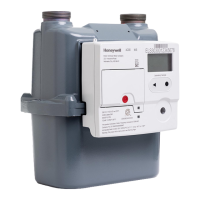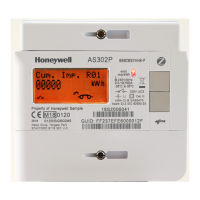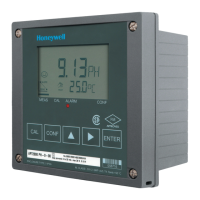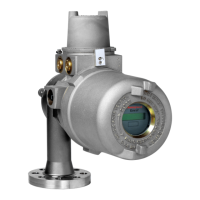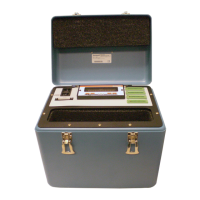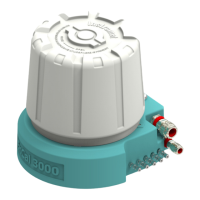122
10.3.6. Servicing the gas cell
10.3.6.1.
Service objective
When servicing the gas cell, it aims to correct any conditions, significantly reducing the
infrared signal passing through it. The 5-meter-long path gas cell also requires clean and
clear windows, but it has the added complication of internal mirrors at both ends and
external mirrors (or “transfer optics”). (The Perkin Elmer bench has all optics sealed away
from service personnel.) The external mirrors must be clean and highly reflective. So,
conditions that foul the windows should be avoided or controlled in the sample system
design.
10.3.6.2.
Lengthening the service interval
The long-path gas cell was mounted vertically in previous generations of the ACM product
line. In this orientation, particles and condensable vapors would often accumulate at the
bottom of the cell on the internal mirrors and the gas cell windows. The ACM 150 monitor
is designed differently, with the gas cell in a horizontal orientation. The low point for
collecting particles and condensable vapors is the inside of the glass housing, which is not
in the infrared path. This design results in less frequent servicing of the gas cell. Also, the
gas cell filter provides a second filtration stage if you always have in-line filters installed
on all the sample lines. Two-stage filtration minimizes particle accumulation in the gas cell.
10.3.6.3.
Visual check of the gas cell and FTIR optics
With the gas cell in place, visually examine the internal mirrors for any degradation of the
highly reflective surfaces, which includes:
• Pitting of the mirror surfaces
• Flaking-off of the mirror coating
• Coating of dust or chemicals
• Water spots or a tarnished appearance
Take a flashlight at an angle to check the mirrors more thoroughly. Examine the pair of
ZnSe windows for the same general problems. If you see any of these problems, the gas
cell should be removed and cleaned, and the windows replaced.
You may not be able to see a chemical coating that absorbs infrared radiation and lowers
the throughput and, subsequently, the infrared signal at the detector. Perhaps the signal
is adequate, but the noise may be too high, resulting in a poor S/N. Try cleaning the gas
cell and replacing the windows. If cleaning the gas cell does not resolve the problem,
replace it.
Check the transfer optics (gas cell’s external mirrors) for dust accumulation or tarnishing
of the mirror finish. If you find dusty or tarnished mirrors, inspect them and the window on
the FTIR optics bench. These mirrors can be cleaned.
10.3.6.4.
Replacing the gas cell
Try cleaning the gas cell to remove dust, spots, or chemical coating. If cleaning does not
correct the condition or if you see that the mirror coating is pitting, tarnished, or flaking off,
replace the gas cell.

